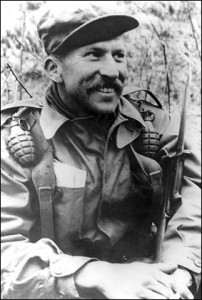Medal of Honor history: Lewis Millett

If there is a picture of someone next to the word “warrior” in the dictionary, it would be Lewis Millett.
The man joined the Army in 1940 to fight the fascists in Europe, but left the service when he figured out that the U.S. wouldn’t enter the war. But instead of deserting to run from battle, Millett did so to run to battle, joining the Canadian armed forces, where he fought in England.
When the U.S. joined the war in 1942, Millet was able to transfer back to the American Army. Joining the 1st Armored Division, Millett earned the Silver Star – the nation’s third-highest award for valor – for his actions in North Africa. He also fought at Salerno and Anzio, but paperwork suggesting he had “deserted” in 1940 (by going to Canada) caught up to Millett. He was court-martialed, demoted to private, and fined $52.
However following his punishment, Millett received a battlefield promotion to second lieutenant and a Bronze Star.
In his second war, Millett was the Company Commander in the 27th Infantry Regiment during the Korean War. On February 7, 1951 on Hill 180 (present-day Osan Air Base in South Korea), he led an incredibly daring assault in what is believed to be the last bayonet charge in American military history. And it is worth noting that the CO that Millett replaced also was awarded the Medal of Honor, but posthumously.
After the Korean War, Gen. William Westmoreland picked Millett to command the Recondo school, which produced some of the world’s finest jungle warriors.
The man took something as tame as retirement and kicked it up a notch: Millett retired in 1971 because he felt the U.S. no longer wanted to win in Vietnam. He took up work as a sheriff’s deputy.
There is so much more to the warrior, who unfortunately passed away in November. Please read the other posts about Col. Millett here.